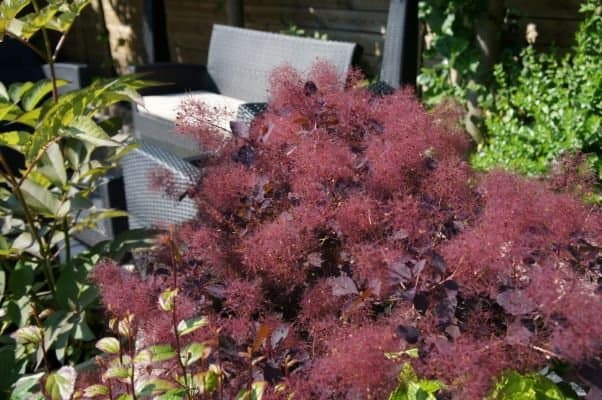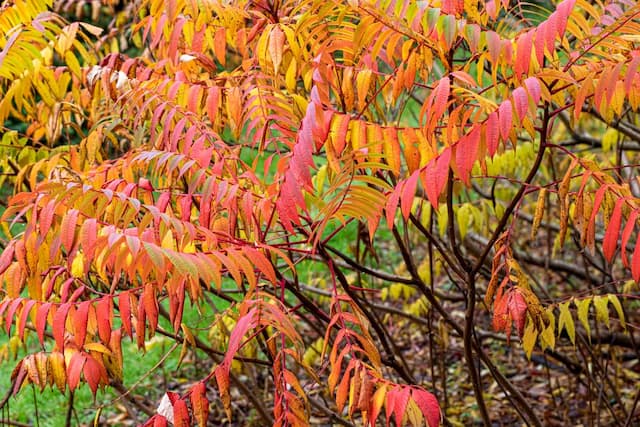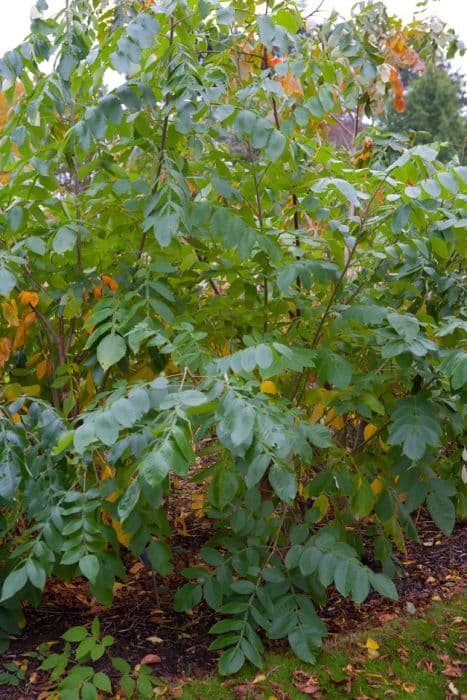Smoke bush Cotinus coggygria Golden Spirit = 'Ancot' (PBR)
![smoke tree [Golden Spirit]](/_next/image?url=https%3A%2F%2Fplants-admin.emdemapps.com%2Fimages%2Fplants%2F%2Fimages%2F604b63b450a12.png&w=3840&q=75)
![smoke tree [Golden Spirit]](/_next/image?url=https%3A%2F%2Fplants-admin.emdemapps.com%2Fimages%2Fplants%2F%2Fimages%2F606da9f0aa188.jpg&w=3840&q=75)
![smoke tree [Golden Spirit]](/_next/image?url=https%3A%2F%2Fplants-admin.emdemapps.com%2Fimages%2Fplants%2F%2Fimages%2F606da9f0abb31.jpg&w=3840&q=75)
![smoke tree [Golden Spirit]](/_next/image?url=https%3A%2F%2Fplants-admin.emdemapps.com%2Fimages%2Fplants%2F%2Fimages%2F606da9f0ad0bf.jpg&w=3840&q=75)
![smoke tree [Golden Spirit]](/_next/image?url=https%3A%2F%2Fplants-admin.emdemapps.com%2Fimages%2Fplants%2F%2Fimages%2F606da9f0ae731.jpg&w=3840&q=75)
![smoke tree [Golden Spirit]](/_next/image?url=https%3A%2F%2Fplants-admin.emdemapps.com%2Fimages%2Fplants%2F%2Fimages%2F606da9f0afabd.jpg&w=3840&q=75)
![smoke tree [Golden Spirit]](/_next/image?url=https%3A%2F%2Fplants-admin.emdemapps.com%2Fimages%2Fplants%2F%2Fimages%2F606da9f0b13b0.jpg&w=3840&q=75)
![smoke tree [Golden Spirit]](/_next/image?url=https%3A%2F%2Fplants-admin.emdemapps.com%2Fimages%2Fplants%2F%2Fimages%2F606da9f0b29c0.jpg&w=3840&q=75)
![smoke tree [Golden Spirit]](/_next/image?url=https%3A%2F%2Fplants-admin.emdemapps.com%2Fimages%2Fplants%2F%2Fimages%2F606da9f0b4297.jpg&w=3840&q=75)
![smoke tree [Golden Spirit]](/_next/image?url=https%3A%2F%2Fplants-admin.emdemapps.com%2Fimages%2Fplants%2F%2Fimages%2F606da9f0b6038.jpg&w=3840&q=75)
![smoke tree [Golden Spirit]](/_next/image?url=https%3A%2F%2Fplants-admin.emdemapps.com%2Fimages%2Fplants%2F%2Fimages%2F606da9f0b81e6.jpg&w=3840&q=75)
ABOUT
The plant known as the Golden Spirit smoke bush is a visually striking deciduous shrub. It is renowned for its vibrant foliage, which transitions through a captivating series of colors throughout the seasons. In the spring, the leaves emerge in a lively, bright yellow tone that brings a sparkle of sunshine to any garden. As the seasons change, these leaves evolve into a beautiful array of colors, adopting shades of orange, coral, and gold, providing a warm and inviting display well into the fall. Adding to its ornamental appeal, the Golden Spirit smoke bush produces misty clusters of feathery blooms in the summer. These flower clusters have a unique, smoke-like appearance, which is actually how this plant gets its common name—the smoke bush. These “smokes” stand above the foliage creating an ethereal look, as if soft clouds or puffs of smoke were caught upon its branches. The contrast of these delicate floral clouds against the bright foliage makes it a favorite among gardeners seeking to add both color and texture to their landscapes. Moreover, the plant has a bushy habit, presenting itself with multiple stems that can create a full and rounded shape. This lushness makes it a fine choice for use as a focal point or a backdrop in mixed borders. When it comes to seasonal interest, the Golden Spirit smoke bush is a standout with its spring to summer transformations and its colorful autumn allure. While the plant changes throughout the year, it consistently attracts attention and brings a dynamic element to garden settings.
About this plant
 Names
NamesFamily
Anacardiaceae.
Synonyms
Golden Spirit Smoke Tree, Ancot Smoke Bush, Golden Smoke Tree, Velvet Cloak Smoke Tree, Royal Purple Smoke Tree, Young Lady Smoke Tree, Winecraft Black Smoke Bush.
Common names
Cotinus coggygria 'Ancot'
 Toxicity
ToxicityTo humans
The Smoke Tree is generally considered non-toxic to humans. There is no widespread evidence or significant reporting of poisoning symptoms upon ingestion. However, as with any plant material, individuals may have varying sensitivities, and some people might experience mild stomach upset if they ingest parts of the plant. It is always advisable to avoid eating ornamental plants due to potential individual reactions, but the Smoke Tree does not have a reputation for being hazardous to humans.
To pets
The Smoke Tree is not commonly listed as a toxic plant to pets. This means that it is not expected to produce toxic effects if pets, such as dogs or cats, ingest its leaves or stems. While the plant is not considered poisonous, ingestion of large amounts of plant material might result in gastrointestinal upset for pets, such as vomiting or diarrhea, due to the non-digestible nature of the plant matter. It is generally a good practice to prevent pets from consuming plant material, especially in significant quantities.
 Characteristics
CharacteristicsLife cycle
Perennials
Foliage type
Deciduous
Color of leaves
Yellow-green
Flower color
Pink
Height
8 feet (2.4 meters)
Spread
8 feet (2.4 meters)
Plant type
Shrub
Hardiness zones
5
Native area
Europe, Asia
Benefits
 General Benefits
General Benefits- Ornamental Appeal: Adds vibrant golden-yellow foliage that turns to stunning shades of coral, orange, and red in fall.
- Drought Tolerance: Once established, it is capable of withstanding periods of low water availability.
- Low Maintenance: Requires minimal care aside from occasional pruning to maintain shape and promote healthy growth.
- Pest Resistance: Generally resistant to common garden pests, reducing the need for chemical treatments.
- Versatility in Landscaping: Can be used in a variety of settings such as borders, specimen planting, or as part of a mixed shrubbery display.
- Seasonal Interest: Provides year-round interest with its changing leaf colors and unique, smoke-like flower clusters in summer.
- Wildlife Attraction: Flowers attract pollinators like bees and its structure can provide shelter for birds.
 Medical Properties
Medical PropertiesThis plant is not used for medical purposes.
 Air-purifying Qualities
Air-purifying QualitiesThis plant is not specifically known for air purifying qualities.
 Other Uses
Other Uses- The Smoke Tree 'Ancot' can be used in natural dye production; its leaves offer a range of colors from green to yellow, suitable for dyeing fabrics and yarns.
- Its striking chartreuse foliage and feathery blooms make it an excellent choice for floral arrangements and bouquets, especially in the fall when the colors are more vibrant.
- The dried flowering 'smoke' can be used in potpourri mixes to add a unique texture and color to the blend.
- In landscape design, it's a perfect plant for creating focal points in gardens due to its distinctive leaf color and form, providing year-round interest.
- The resilient wood of Smoke Tree 'Ancot' can be used in woodworking for crafting small decorative objects or specialty items like walking sticks.
- This plant can serve as a natural shelter for birds and wildlife in the garden, especially when planted as part of a mixed shrub border.
- The Smoke Tree 'Ancot' is used as a parent in horticultural breeding programs to develop new varieties with desirable characteristics like its unique foliage color.
- Its mid-size stature allows it to be used as a screening plant to provide privacy in urban gardens where space is limited.
- Smoke Tree 'Ancot' can be cultivated as a bonsai specimen, prized for its leaf color and structure as well as its adaptability to the bonsai form.
- The plant is sometimes incorporated into educational programs and activities for children, teaching them about plant growth, photosynthesis, and seasonal changes.
Interesting Facts
 Feng Shui
Feng ShuiThe Smoke Tree is not used in Feng Shui practice.
 Zodiac Sign Compitability
Zodiac Sign CompitabilityThe Smoke Tree is not used in astrology practice.
 Plant Symbolism
Plant Symbolism- Transformation and Change: The Cotinus coggygria Golden Spirit, commonly known as Smoke Bush, undergoes a dramatic change in foliage color from bright golden yellow to vibrant orange-red shades in the fall, symbolizing life's ever-changing nature.
- Beauty and Allure: With its stunning, cloud-like puffs of flowers that give it the name Smoke Bush, this plant represents enchantment and the captivating allure of beauty.
- Mystery and Elusiveness: The "smoky" appearance of its blooms lends a sense of mystery and elusiveness, reminiscent of magic and hidden secrets in the garden.
- Provision and Generosity: In some cultures, the abundant and prolific nature of the Smoke Bush's flowers can symbolize generosity and the provision of abundance.
 Water
WaterThe Smoke Bush requires moderate watering to maintain evenly moist soil, particularly during dry spells in summer. It's preferable to water this plant deeply once a week with about 1-2 gallons per watering session for an established shrub, depending on the weather and soil conditions. Newly planted shrubs may require water more frequently, such as every few days, to ensure proper establishment. During the winter or cooler months, you can reduce the amount of water since the plant is dormant and uses less water. Overwatering can lead to root rot, so it is essential to ensure the soil drains well and is not perpetually wet.
 Light
LightThe Golden Spirit Smoke Bush thrives best in full sun to partial shade. Ideally, plant it in a location where it can receive at least six hours of direct sunlight daily, as this promotes the best leaf color and flower production. However, it can tolerate some light shade, especially in hotter regions, where some afternoon shade can prevent scorching.
 Temperature
TemperatureThe Golden Spirit Smoke Bush is hardy and can withstand a range of temperatures, from about -20°F to 100°F, making it suitable for many climates. However, the ideal temperature range for this plant is between 60°F and 75°F for optimal growth. It's frost-hardy once established but may require protection from extreme cold when young.
 Pruning
PruningPruning the Golden Spirit Smoke Bush helps maintain its shape and encourages the growth of vibrant new foliage. Prune it in late winter or early spring before new growth begins. It's generally recommended to prune no more than one-third of the plant each year to keep it healthy. Some gardeners prune it back hard (a technique known as coppicing) every few years to rejuvenate the plant and enhance foliage color.
 Cleaning
CleaningAs needed
 Soil
SoilThe Smoke Bush prefers well-draining soil with a pH ranging from neutral to slightly alkaline. A mix containing loam, peat, and sharp sand in equal parts would be ideal, ensuring good aeration and drainage. Consistent moisture is important, but avoid waterlogged conditions which can lead to root rot.
 Repotting
RepottingSmoke Bush, being a large shrub, is not commonly repotted as it is usually planted directly in the garden. However, if grown in a container, repotting every 2-3 years in spring using fresh soil mix can promote healthy growth.
 Humidity & Misting
Humidity & MistingSmoke Bush doesn't require high humidity and is quite adaptable to various humidity levels typically found outdoors. It's tolerant of both dry and humid conditions, making it a versatile shrub for different climates.
 Suitable locations
Suitable locationsIndoor
Ensure bright light, minimal watering, avoid extreme heat.
Outdoor
Full sun to partial shade, well-drained soil, space to grow.
Hardiness zone
5-8 USDA
 Life cycle
Life cycleThe Cotinus coggygria Golden Spirit, commonly known as Smoke Tree 'Golden Spirit', begins its life cycle as a seed which, once germinated, grows into a sapling with characteristic golden-yellow leaves. As the plant matures, it enters a vegetative phase marked by vigorous stem and foliage growth, eventually forming a multi-stemmed shrub or small tree. During its reproductive stage, usually in late spring to early summer, it develops feathery flower inflorescences which, after pollination, may produce seeds that contribute to the spread of the species. After the flowering stage, the leaves of 'Golden Spirit' often transition to shades of orange, red, or burgundy in the fall, adding seasonal interest before they are shed as the plant enters dormancy during the winter. Each year, the plant will re-sprout from existing woody growth or root system in spring, repeating its annual cycle. With proper care, the Smoke Tree 'Golden Spirit' can live for several decades, continuing this cycle annually.
 Propogation
PropogationPropogation time
Spring-Early Summer
The Smoke bush 'Golden Spirit,' officially named Cotinus coggygria 'Ancot', propagates best through semi-hardwood cuttings taken in the late summer. To do so, select a healthy, non-flowering shoot and cut a 4 to 6-inch (10 to 15 cm) length, ensuring it contains several leaf nodes. Remove the leaves from the lower half of the cutting and dip the cut end into rooting hormone powder to increase the chances of successful root development. Then, insert the cutting into a well-draining rooting medium such as perlite or a mix of peat and sand. Keep the medium moist but not soggy, and place the cutting in a warm area with indirect sunlight. Roots typically develop within several weeks, after which the new Smoke bush can be gradually acclimated to outdoor conditions.




